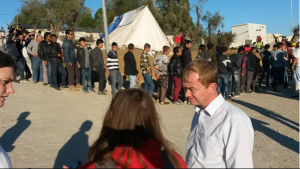The Liberal Democrat leader, Tim Farron MP, has launched an open consultation on ways Britain can support unaccompanied refugee children.
It is estimated there are more than 20,000 unaccompanied refugee children amongst those who have reached Europe, many of whom are at risk from being trafficked into prostitution or child labour. Liberal Democrats have repeatedly backed Save the Children’s call for the government to offer safe haven to 3,000 of these children, the UK’s fair share.
Tim Farron hosted a cross party roundtable which looked at how the Government and communities could welcome these children and what resources, support and tools are needed. The meeting was attended by over 20 experts and organisations working with refugees, vulnerable children and foster carers.
Tim Farron MP said:
“These children have fled desperate situations, are now vulnerable and at risk from traffickers. I have repeatedly called for the government to take, 3,000 children, which is Britain’s fair share. We recognise communities will need support to meet this challenge, which is why we’re inviting everyone to be a part of this consultation process to set out how we can meet this moral obligation and pressure the government to do the right thing.”
Liberal Democrats have launched an online consultation based on the outcome of this meeting and are inviting experts and any member of the public to submit proposals to form a blueprint of how Britain can accept the unaccompanied minors who have arrived in Europe.
The consultation document can be read here
Consultation responses should be sent to 3000@libdems.org.uk by the 18th March 2016


I have no objection to 3.000 children being admitted. I strongly object, that once admitted these children will then be allowed to bring, Mum, Dad, Cousins, Aunties, Uncles, Grandads etc etc etc. Yes let the children in. Keep them safe. But as soon as relatives make contact, they should be sent to the relatives and NOT the other way round.